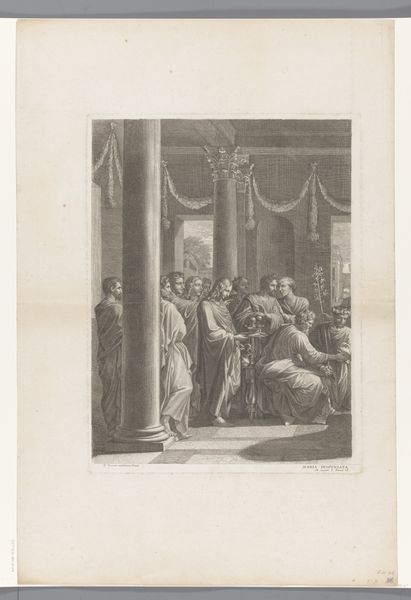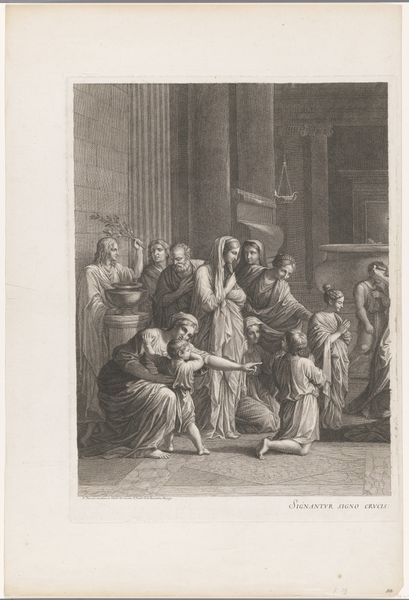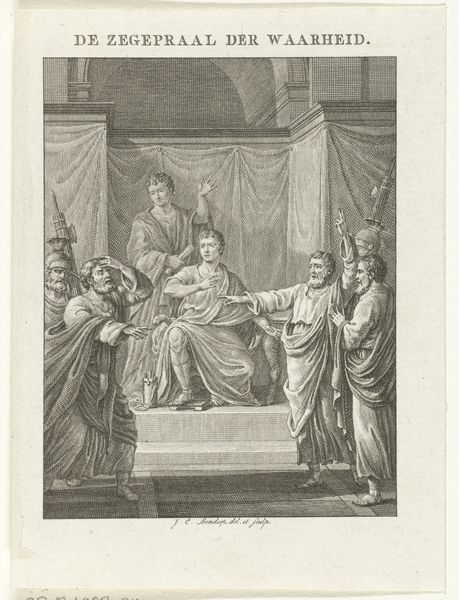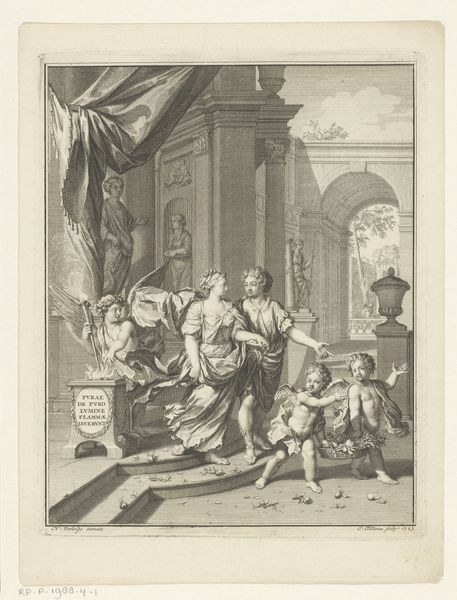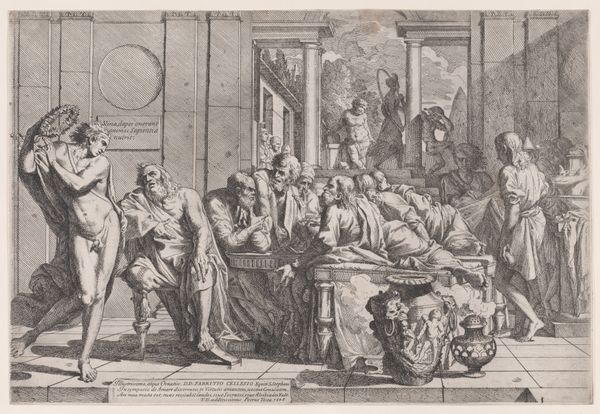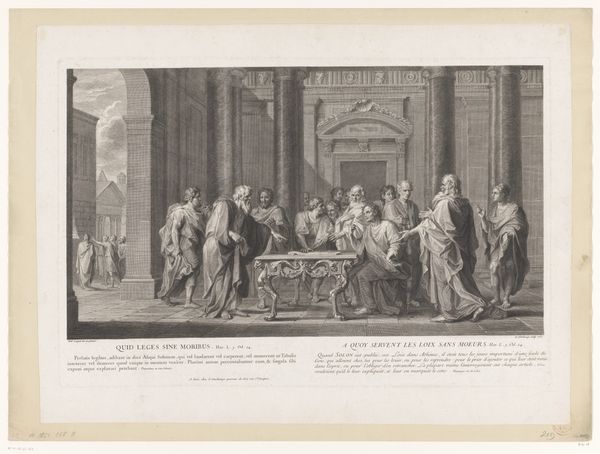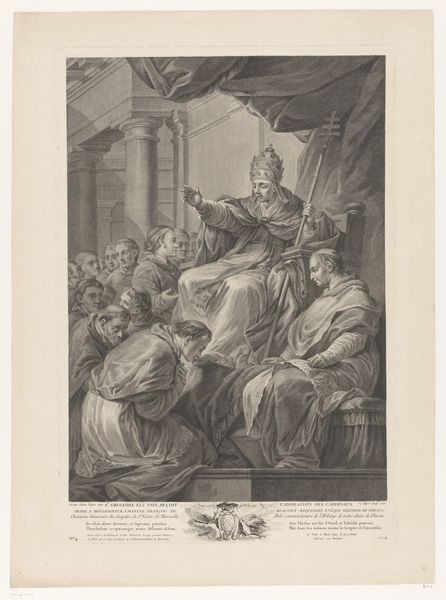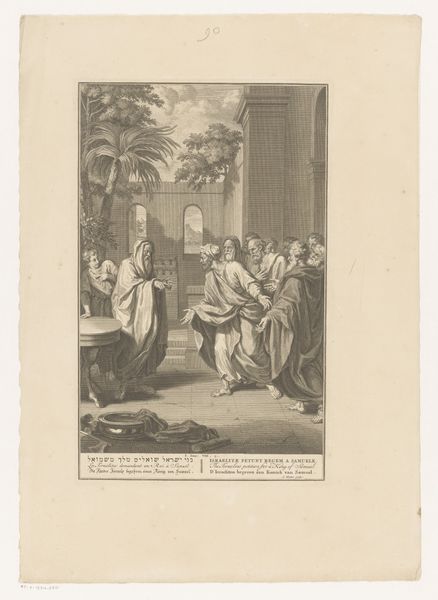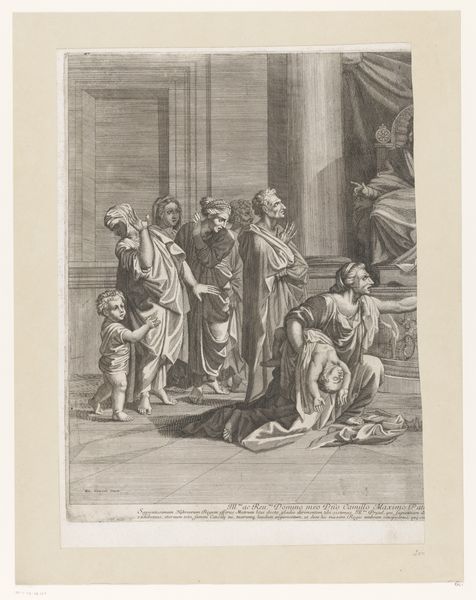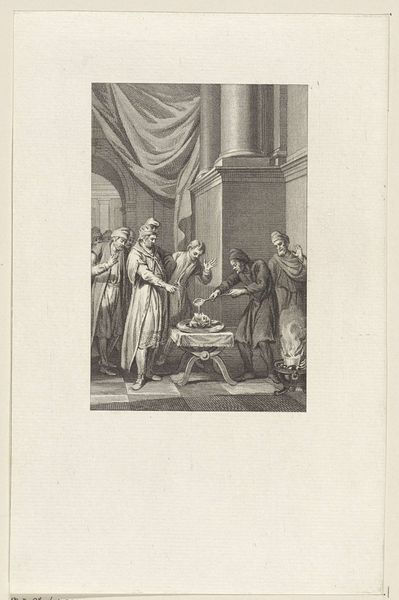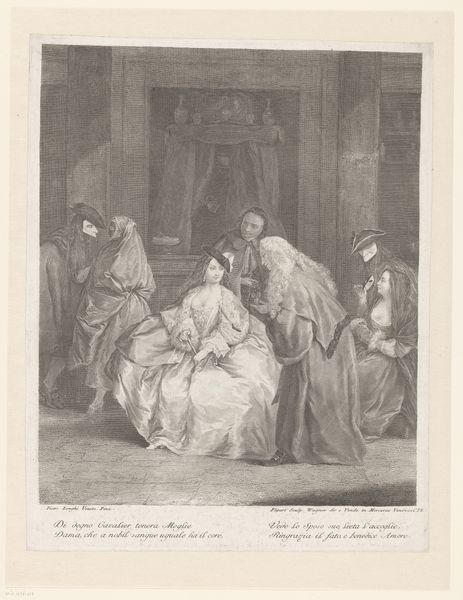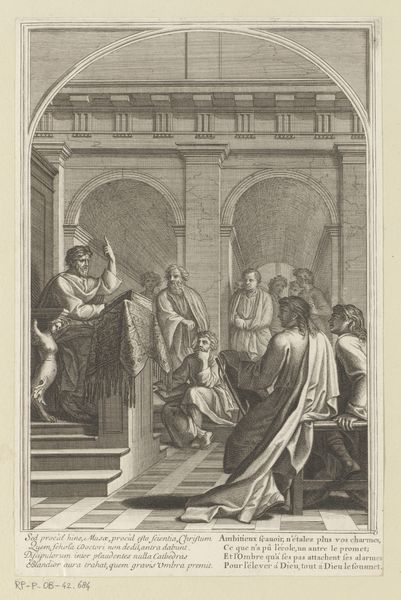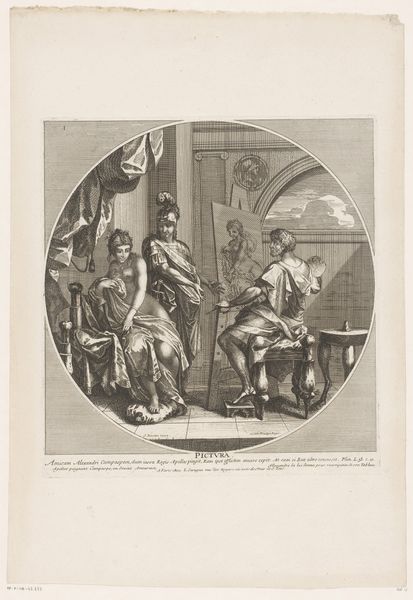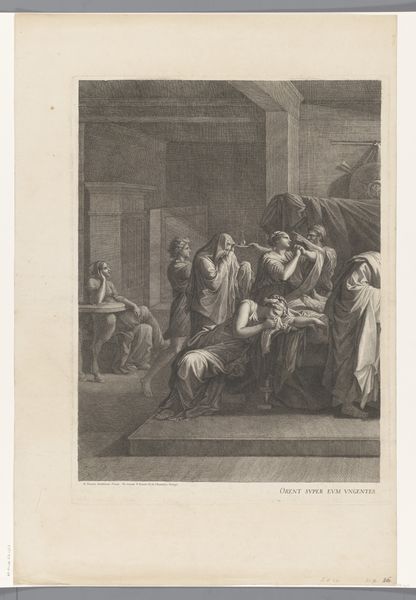
print, engraving
#
narrative-art
#
baroque
# print
#
old engraving style
#
figuration
#
history-painting
#
engraving
Dimensions: height 606 mm, width 433 mm
Copyright: Rijks Museum: Open Domain
Curator: Looking at this print by Jean Pesne, "Christus in het huis van Simon in Bethanië (linker deel)," made between 1680 and 1694, the sheer level of detail immediately strikes me. What are your initial thoughts? Editor: Overwhelming. The contrast is intense, almost theatrical. The artist certainly wants you to focus on Christ's feet. There’s such a strong light falling on that one section, like a spotlight on humility. Curator: It depicts the biblical scene where Mary Magdalene washes Jesus' feet. Prints like this were widely circulated, shaping how people envisioned biblical events and figures, particularly amongst those who may not have had access to lavish paintings or religious texts themselves. Pesne worked at the French court; how do you read his context in this engraving? Editor: Right, so seeing it only as a courtly vision, I think of hierarchy immediately. Consider how Pesne arranged the composition and the architectural framework. The figures are deliberately positioned with careful attention to how they command spatial awareness and interact. Also, is this staged? Note the highly artificial grouping with those columns rising from a vanishing point behind a horizontal array of bodies. I would read this piece as theatrical! Curator: Yes, the Baroque era did love its drama. Engravings also democratized art in a sense, yet Pesne also used this format to serve power by disseminating versions of established artistic conventions to wider audiences, and upholding both religious and monarchical power. Editor: Agreed, its didactic aspect can not be disregarded when you consider its historical reception. The contrast, between light and dark—or purity and sin—adds another layer of complexity to Pesne’s composition. Curator: Thinking about the reception in the Rijksmuseum today, do you believe this narrative continues to influence visitors? Does it make the viewers more invested in a redemption story, or does its medium relegate it to another object lesson about baroque engraving practices? Editor: That's a difficult question to answer. It all depends on the individual's cultural, social, and perhaps, religious backgrounds. I, myself, focused more on formal qualities of light and its graphic nature. However, understanding the role that religious institutions played at that time helps me understand Pesne's strategic intent for the composition and circulation.
Comments
No comments
Be the first to comment and join the conversation on the ultimate creative platform.
